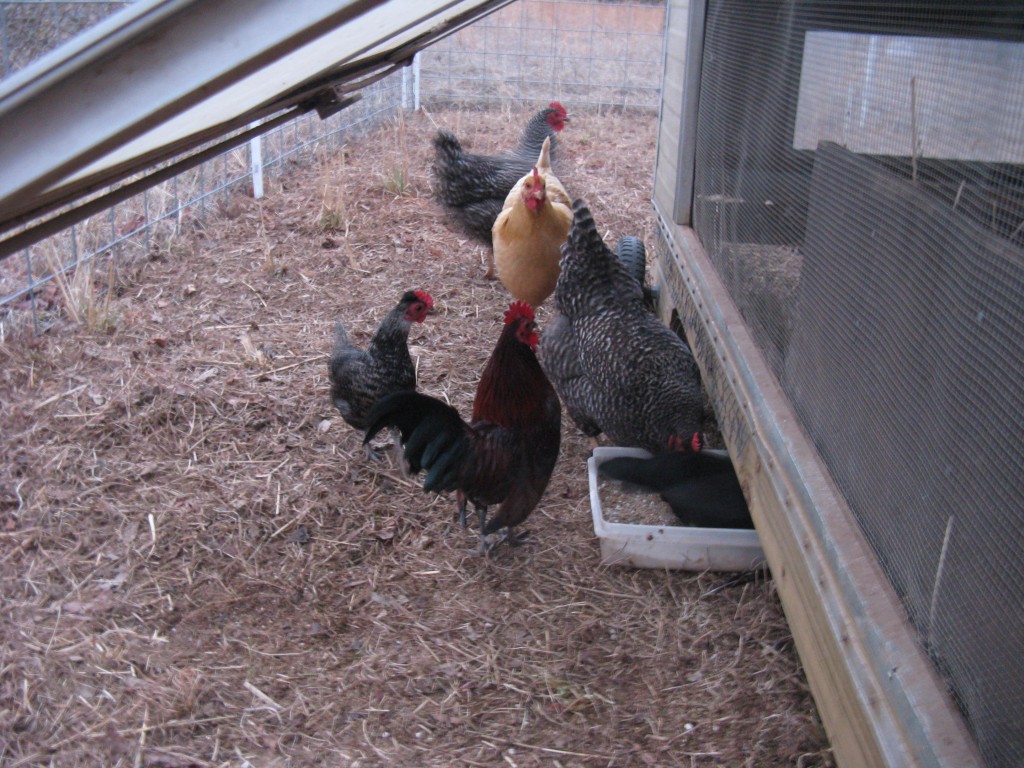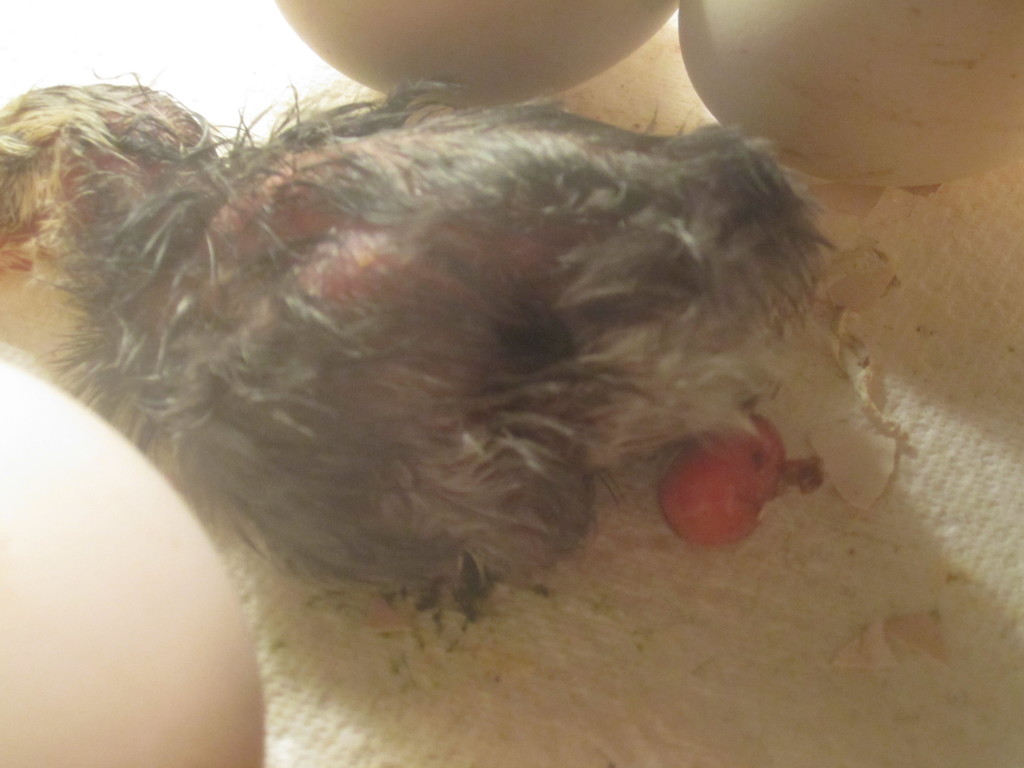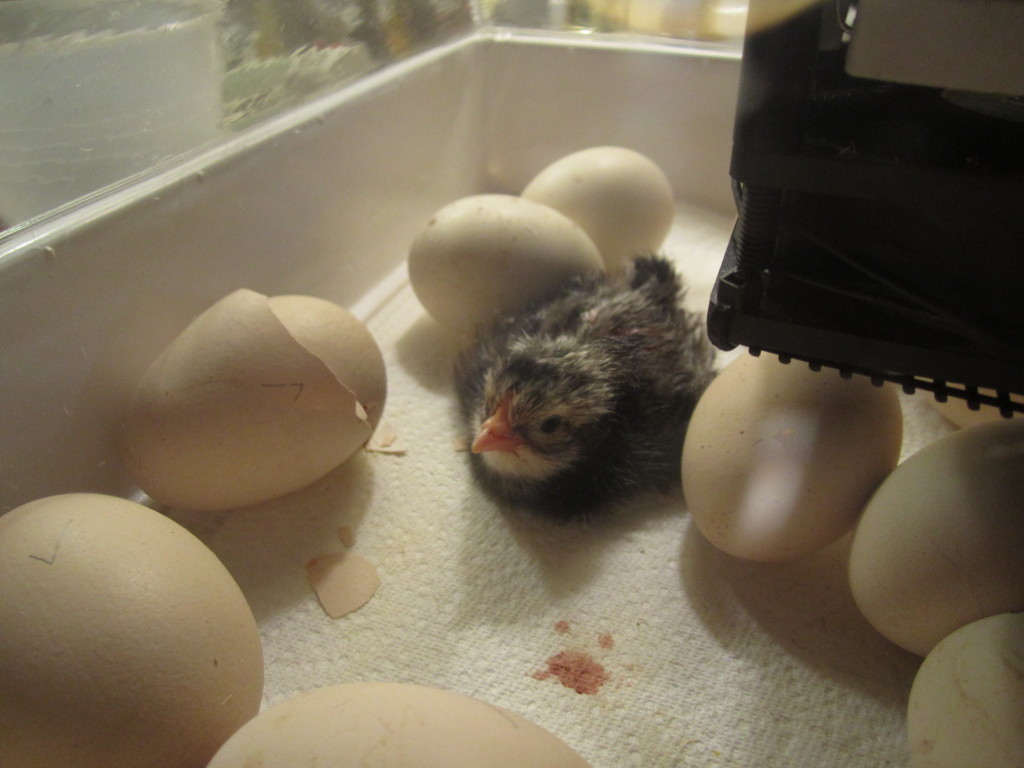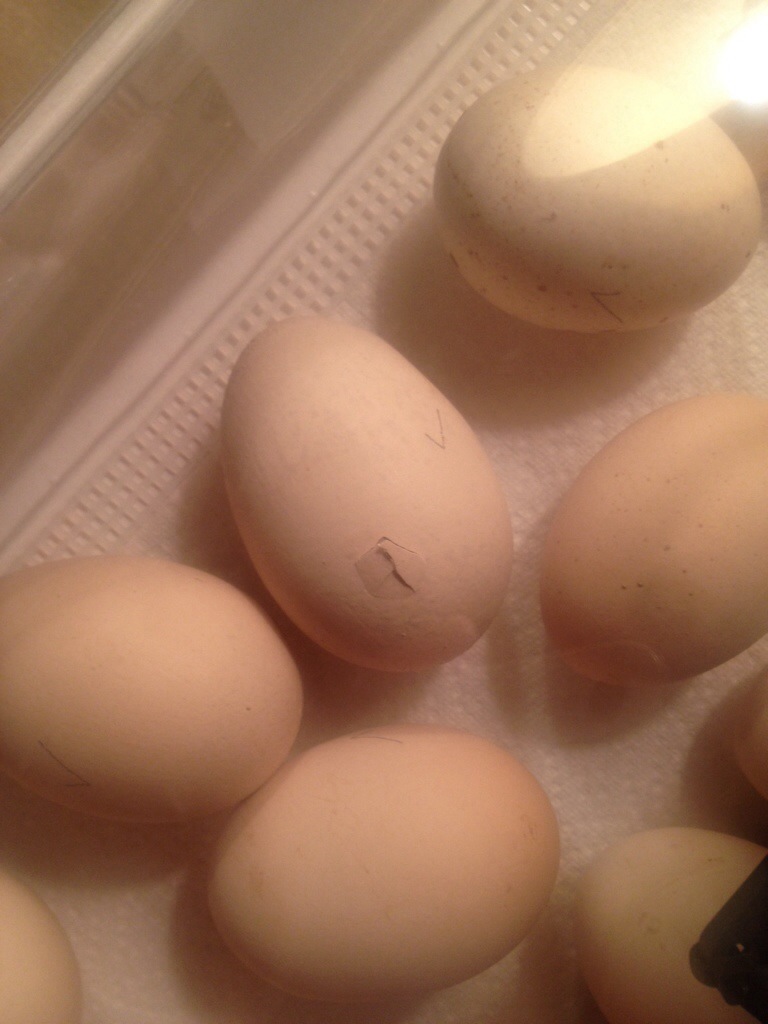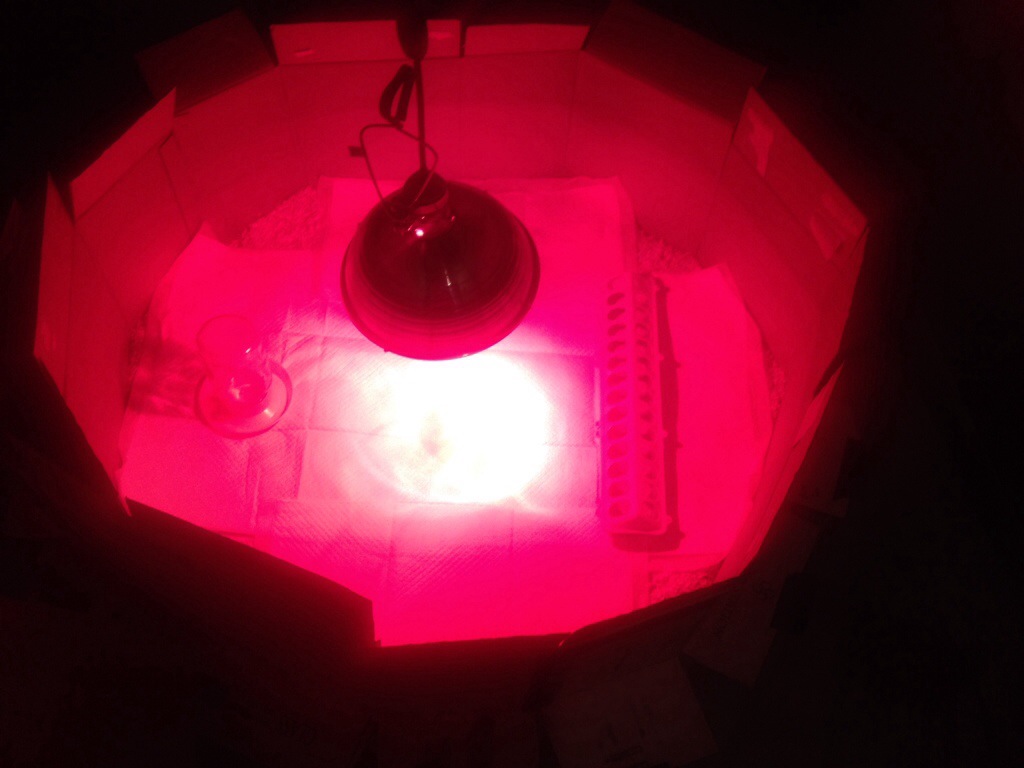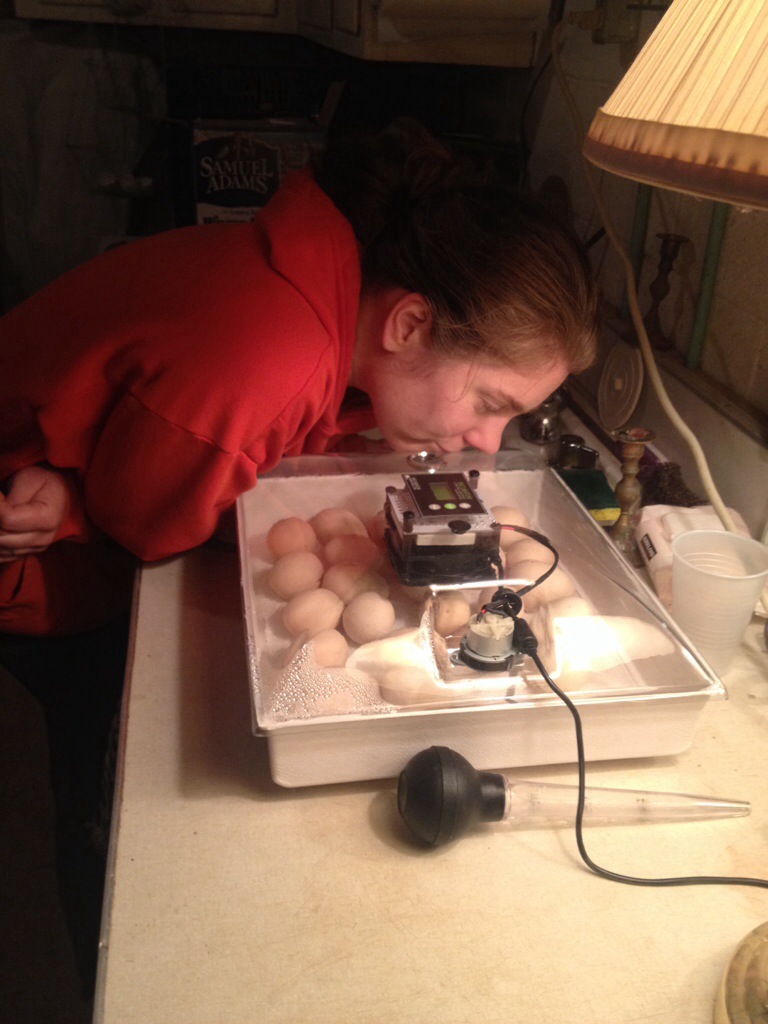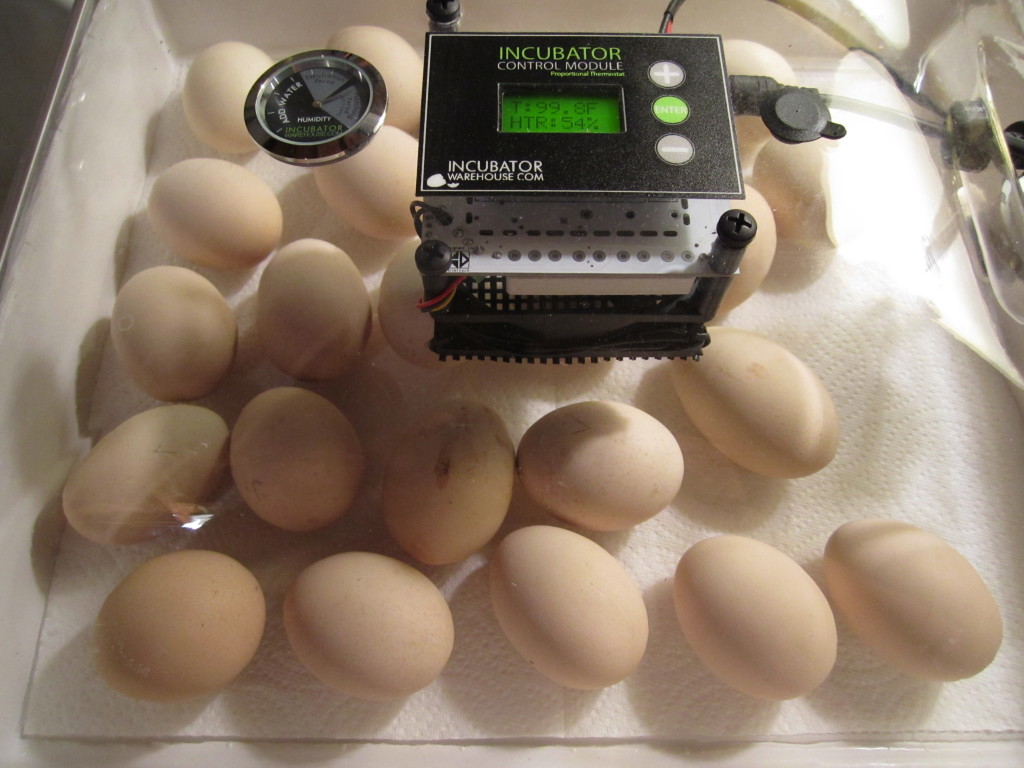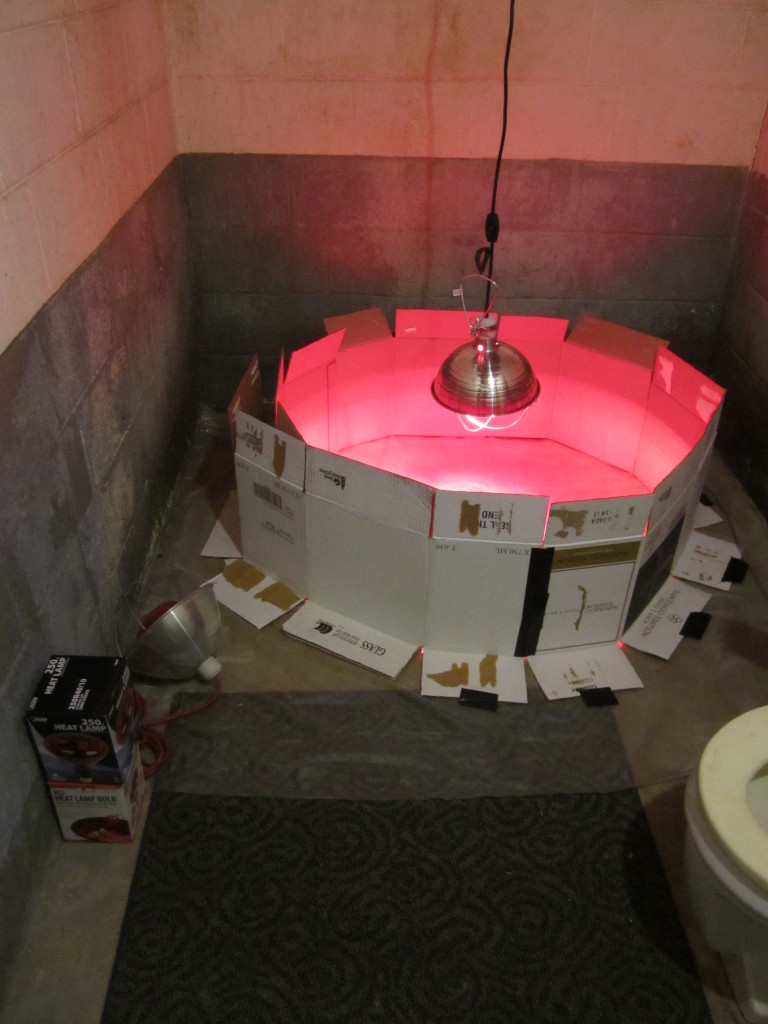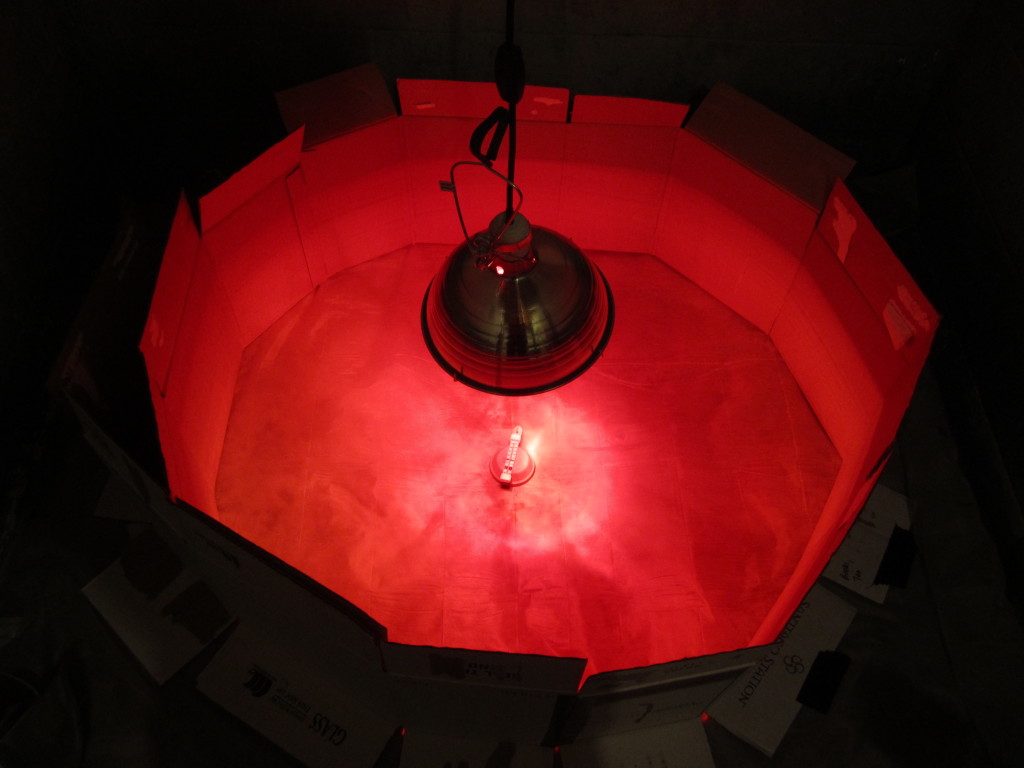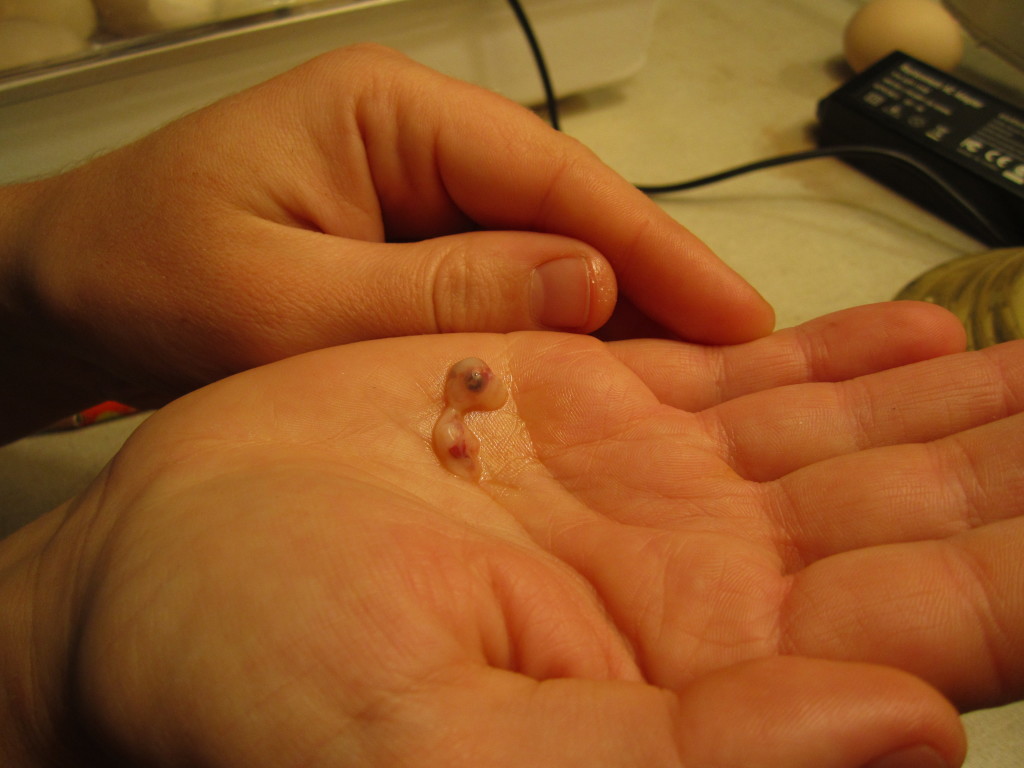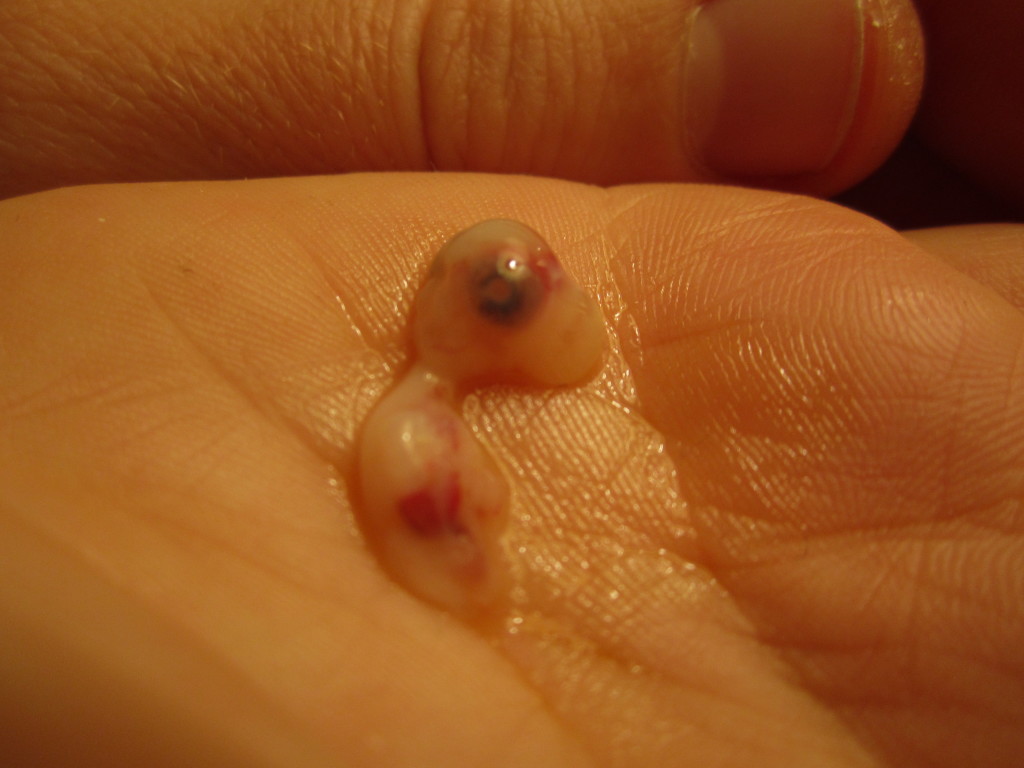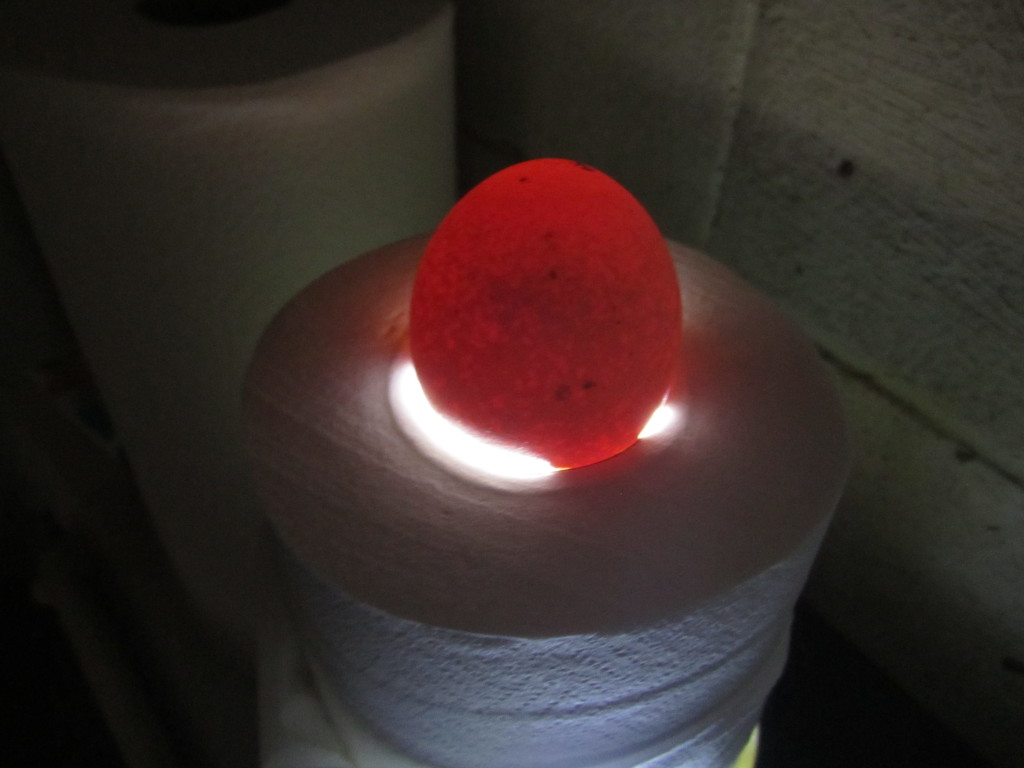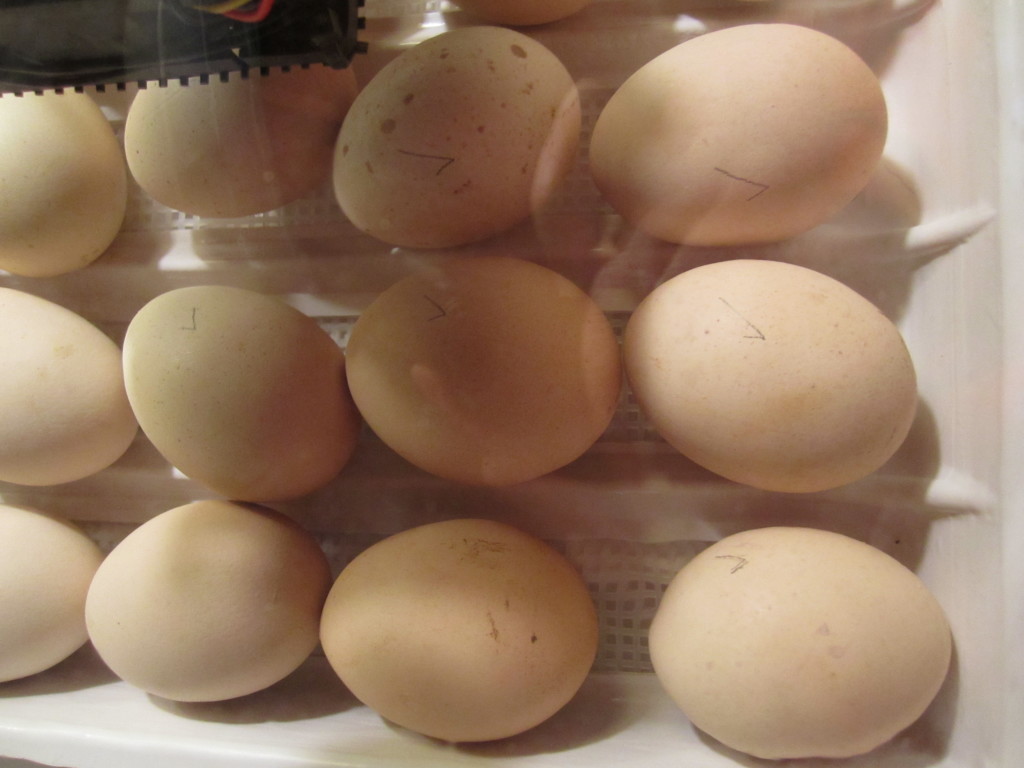despite having a really great hatching experience for our first batch of chicks, there were still some anomalies in our new population of chicks. of course we’ve had some chicks who took longer to hatch then others, or some chicks that appear to be smaller (a little more runty) than the others, but this is to be expected. no chick is the same, of course!
beyond these “average uniquenesses” among our chicks, three particular anomalies stand out from this experience:
- a chick born with part of her yolk sac unabsorbed
- a chick born with an underdeveloped leg
- a chick that actually needed help hatching
i want to describe these three different anomalies and how we’ve dealt with them/plan to deal with them. this post focuses on the third…
anomaly #3:
the very last chick that was born in this bunch was born with my assistance. he was born over 3 days after the beginning of the hatch was supposed to begin, and it had been 24 hours since the next-to-last chick had been born naturally.
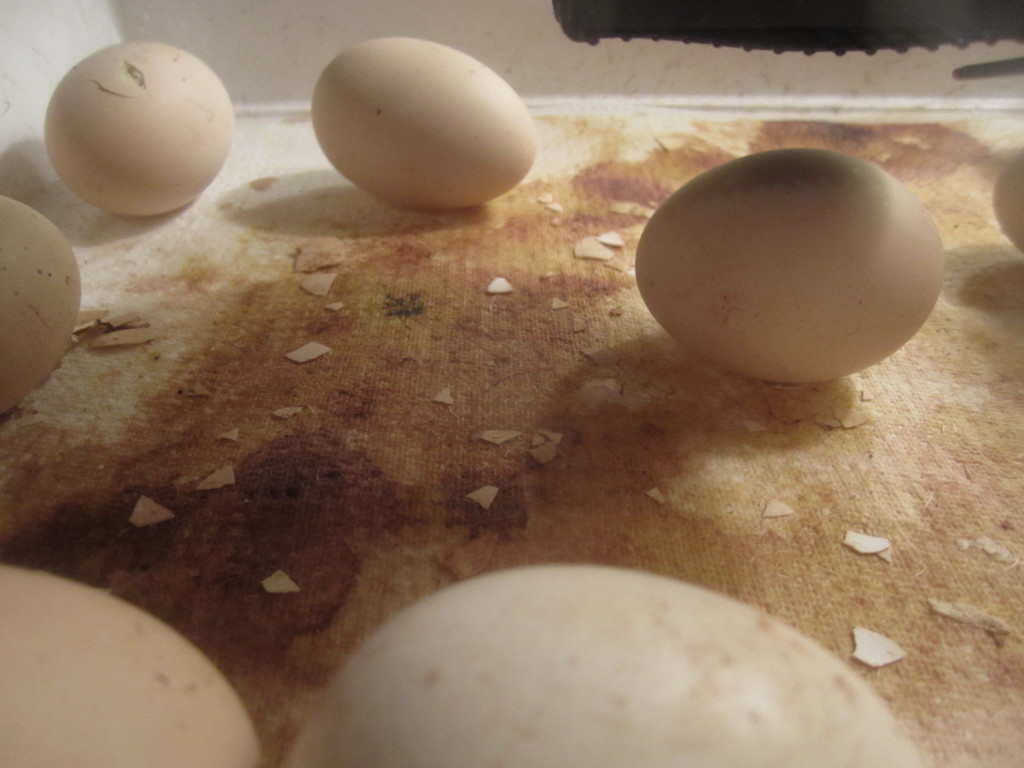
the inside of the incubator, looking rather empty near the end of the hatch.
just a reminder, all of the other chicks were born naturally, by themselves, without any intervention from me at all. and this is the way it should be, since nature can almost always do “its thing” without any major issues. chicks need to be born based on their own timing. sometimes they need a little extra time to absorb all of the yolk sac into their abdomen (from which they are provided with enough nourishment for a few days and do not need food or water). other times they are still absorbing all of their blood (that was once coursing through the vessels inside of the egg). you should always try not to intervene, and only do so as a last resort.
this is what happened with chick #22. he had pipped through his shell over 24 hours before, pipping all the way around the perimeter. in the previous hatches i witnessed, once this “perimeter pip” happened, it took about 30 minutes for the chick to come busting into the world. but chick #22 was still inside, 24 hours later. i checked him out a few times, moving his egg, and could still hear him peeping inside… a good sign! hoping that a poke or two might motivate him and get him going again, i was disappointed when it didn’t.
so i looked closer… the membrane directly inside the shell had dried out, and was not moist and flexible as it had been during the other hatches. since he was the last one in the incubator (besides 2 other eggs that we later determined had died during development and were not viable anymore), i wondered if him drying out had anything to do with all of the other chicks (and their moistness) being removed. the humidity reading on the incubator still said it was normal inside, but you never know what was happening inside his shell.
after doing some research, i learned that if a chick’s membrane dries out too much, it might get stuck to the chick and keep it from moving around in its shell and being able to break free. it was clear that this is what happened to chick #22.
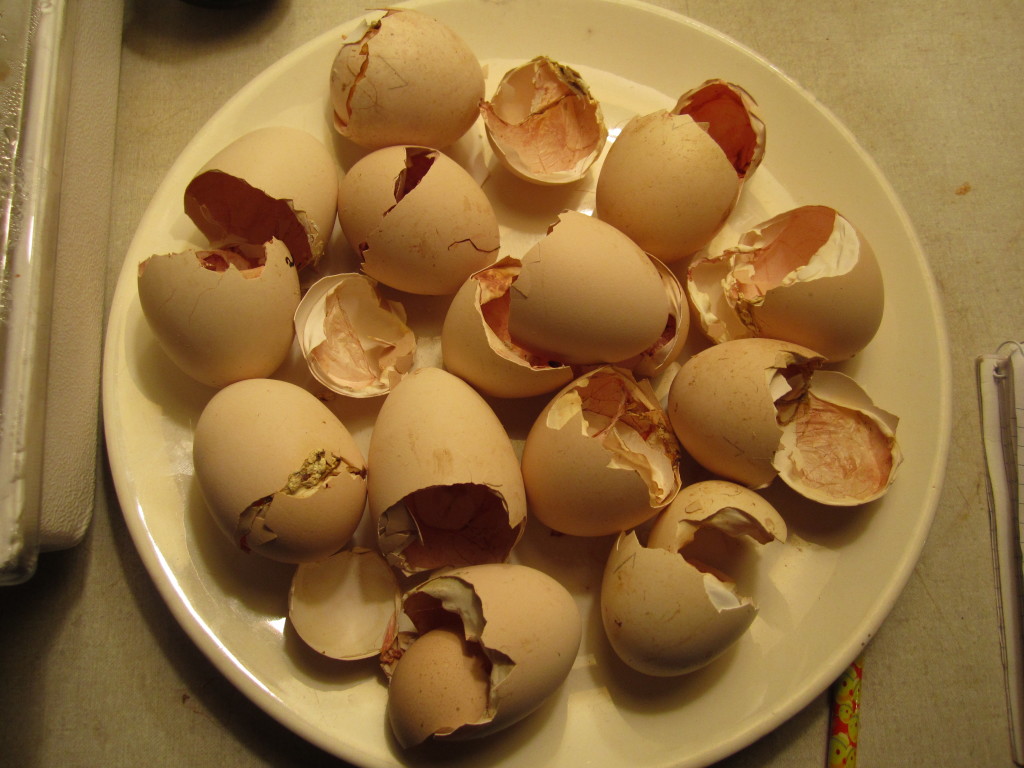
some of the hatched egg shells from the chicks before chick #22. see the membranes inside?
so, i washed my hands, got a knife and a damp cloth, and opened up the incubator. i worked fast so that the little dude wouldn’t get chilled. using my knife, i slipped the very tip into the opening of the shell and pulled outwards, gently. this pulled part of the shell away and allowed me to peel the rest of the shell pieces away with my hands alone. before i fully removed a shell piece, i had to see if it was “glued” to the little chick before i pulled it away–since chicks have very sensitive skin and i didn’t want to hurt him!
a few of the pieces were stuck to the chick, pinning his body and head in a certain position. as i worked, i could tell that i was saving the chick’s life, since he was way too stuck in there and would not have been able to peck or kick his way the rest of the way into life.
where shell pieces were glued to him, i used my damp cloth to wipe at the spot until they came free, and then moved on to the next spot. once he was free, i tried to dry him off a little bit, and then i closed the lid to the incubator and cranked up the temperature to 100 degrees to warm him up and dry him off. he seemed just fine in there, acting the way all the other chicks had acted after hatching. i left him in there until he had dried some, and then moved him to see the rest of his siblings under the heat lamp. thinking about how he had been in his shell (potentially using up 24 hours worth of his nutrient-dense yolk supply ),i didn’t want to risk keeping him in the incubator too long without food or water.
so that’s the story of how i got to be a chicken midwife, and man was it super fun! i’m not too cool to admit that i was way proud of myself afterwards! next up on my wish list… being a midwife to mammals!
.:.
